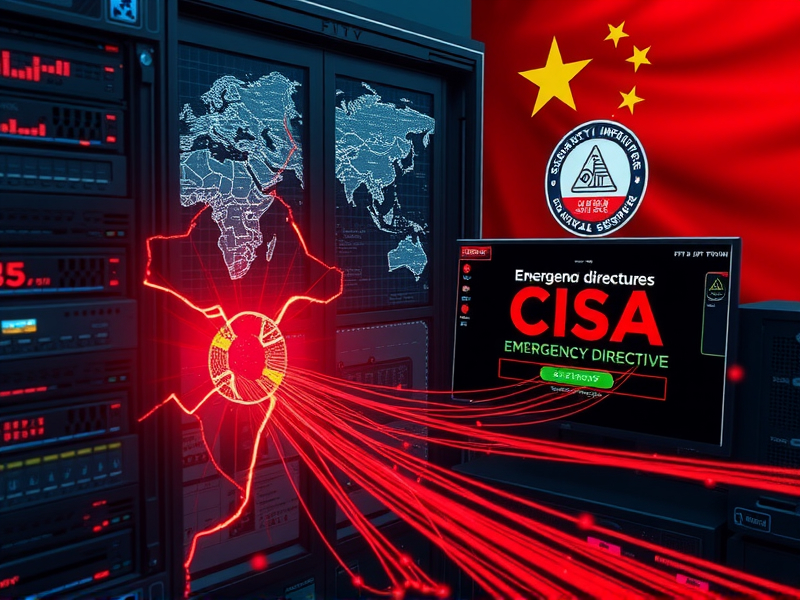Threat Overview
A recently published threat report by AlienVault on October 24, 2025, highlights a significant cyber threat involving the exploitation of the F5 BIG-IP source code leak. This leak is associated with state-linked campaigns utilizing the BRICKSTORM backdoor. The report provides comprehensive insights into the activities of UNC5221, a China-linked threat cluster actively targeting organizations using F5 BIG-IP devices following a confirmed breach of F5’s internal development data.
Key Details of the Threat
- The stolen data includes portions of the BIG-IP source code and vulnerability information, which significantly heightens the risk of rapid 0-day discovery and weaponization.
- The Cybersecurity and Infrastructure Security Agency (CISA) has issued an Emergency Directive warning of an imminent threat to federal networks.
- The attackers have deployed a Go-based ELF backdoor named BRICKSTORM. This backdoor establishes a persistent command and control (C2) tunnel using WebSocket, employing various techniques to evade detection.
- BRICKSTORM can transform a BIG-IP device into a stealth egress point and internal proxy, making it challenging to detect and mitigate the threat.
Impact on Organizations
The exploitation of F5 BIG-IP vulnerabilities poses a severe risk to organizations relying on these devices for network management and security. The leak of source code and vulnerability information accelerates the potential for zero-day exploits, which can be particularly damaging if not addressed promptly.
Technical Analysis
The BRICKSTORM backdoor is designed to operate stealthily, making it difficult for traditional security measures to detect. It uses WebSocket for C2 communications, which can blend in with legitimate network traffic, complicating detection efforts. The backdoor’s ability to turn BIG-IP devices into proxies further enhances its stealth capabilities.
Recommendations for Mitigation
- Immediate Patching: Organizations should prioritize applying patches released by F5 for the disclosed vulnerabilities. Delaying patch deployment increases the risk of exploitation.
- Enhanced Monitoring: Implement advanced monitoring solutions to detect unusual activities that may indicate the presence of BRICKSTORM or similar backdoors.
- Network Segmentation: Segment networks to limit the spread of potential threats. This can help contain breaches and reduce the impact on critical systems.
- Regular Security Audits: Conduct regular security audits and vulnerability assessments to identify and address weaknesses in network infrastructure.
- Incident Response Planning: Develop and regularly update incident response plans to ensure a swift and effective response to potential breaches.
Detailed Analysis of the Threat Cluster
The threat cluster UNC5221 is known for its sophisticated tactics, techniques, and procedures (TTPs). This group has been observed using advanced persistent threat (APT) methods to infiltrate and maintain access to target networks. The use of the BRICKSTORM backdoor demonstrates their capability to leverage stolen source code and vulnerability information to create highly effective and stealthy malware.
Indicators of Compromise
Security analysts should look for specific indicators of compromise (IoCs) associated with the BRICKSTORM backdoor. These may include unusual network traffic patterns, unexpected changes in device configurations, and the presence of unknown files or processes on BIG-IP devices.
Specific Vulnerabilities Disclosed by F5
F5 has disclosed over twenty vulnerabilities affecting various products. These vulnerabilities span different components of the F5 infrastructure, including the Traffic Management Microkernel (TMM), Configuration utility, and Advanced WAF. Organizations using these products should review the detailed vulnerability reports provided by F5 and apply the necessary patches immediately.
Best Practices for Securing BIG-IP Devices
- Regular Updates: Ensure that all F5 devices are running the latest software versions and security patches.
- Access Controls: Implement strict access controls and use multi-factor authentication (MFA) to prevent unauthorized access.
- Network Isolation: Isolate critical systems and segment networks to minimize the attack surface.
- Continuous Monitoring: Deploy continuous monitoring tools to detect and respond to suspicious activities in real-time.
Conclusion
The F5 BIG-IP source code leak and the associated BRICKSTORM backdoor represent a significant threat to organizations using these devices. Immediate action is required to mitigate the risks, including patching vulnerabilities, enhancing monitoring, segmenting networks, conducting regular audits, and preparing robust incident response plans.


